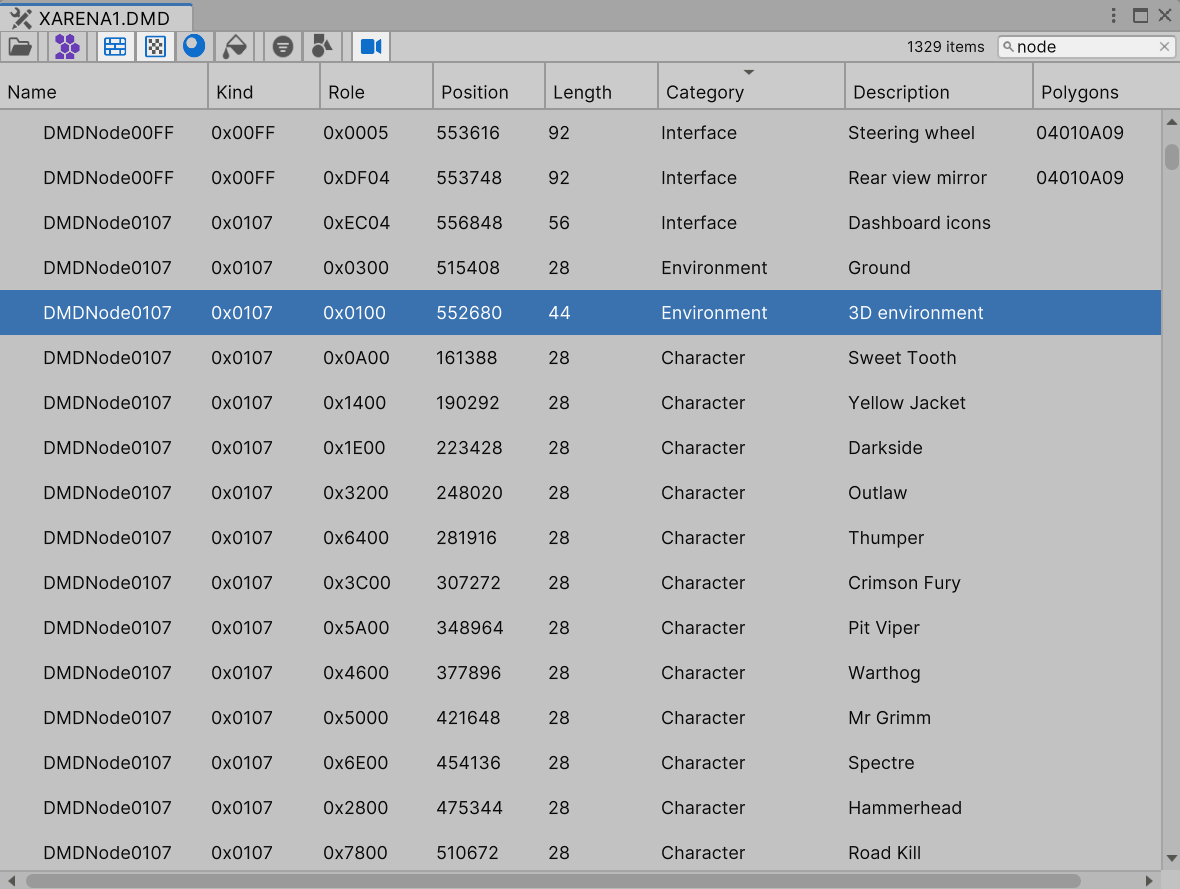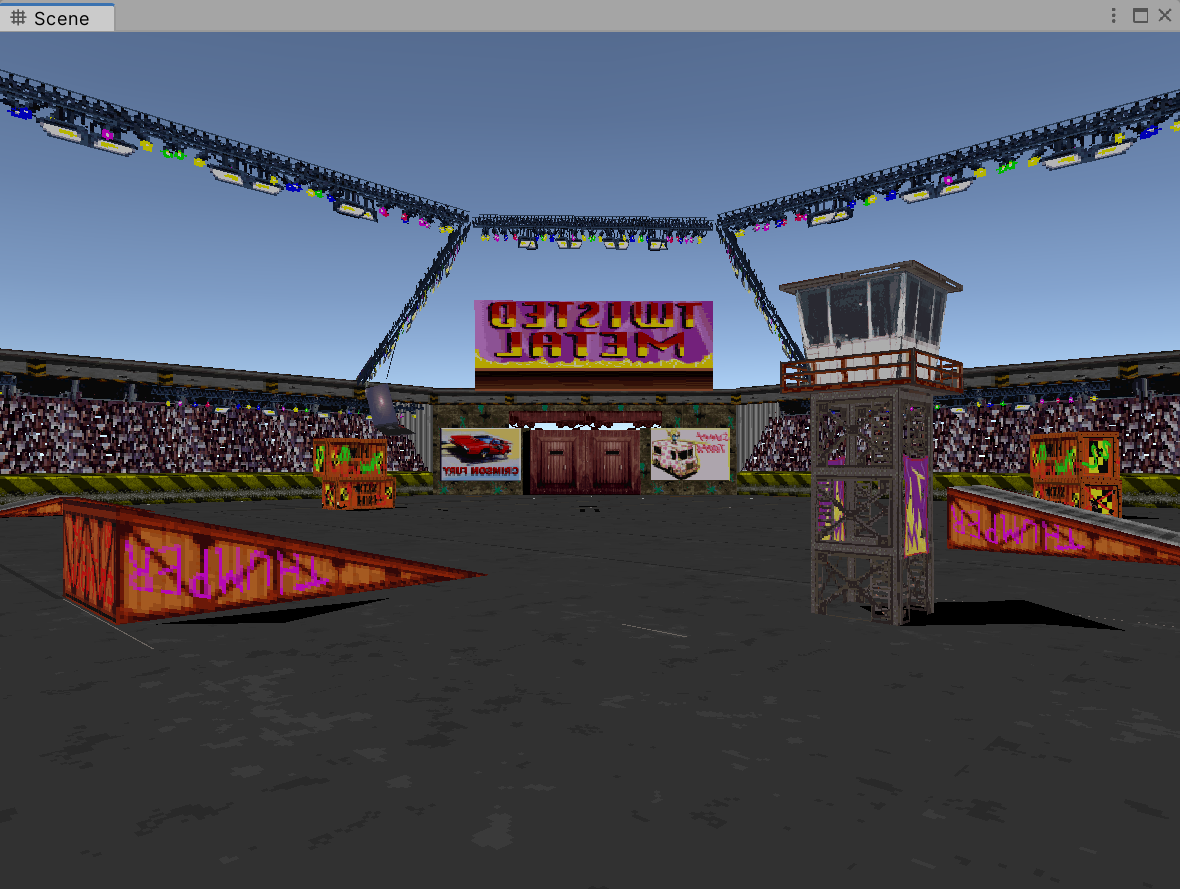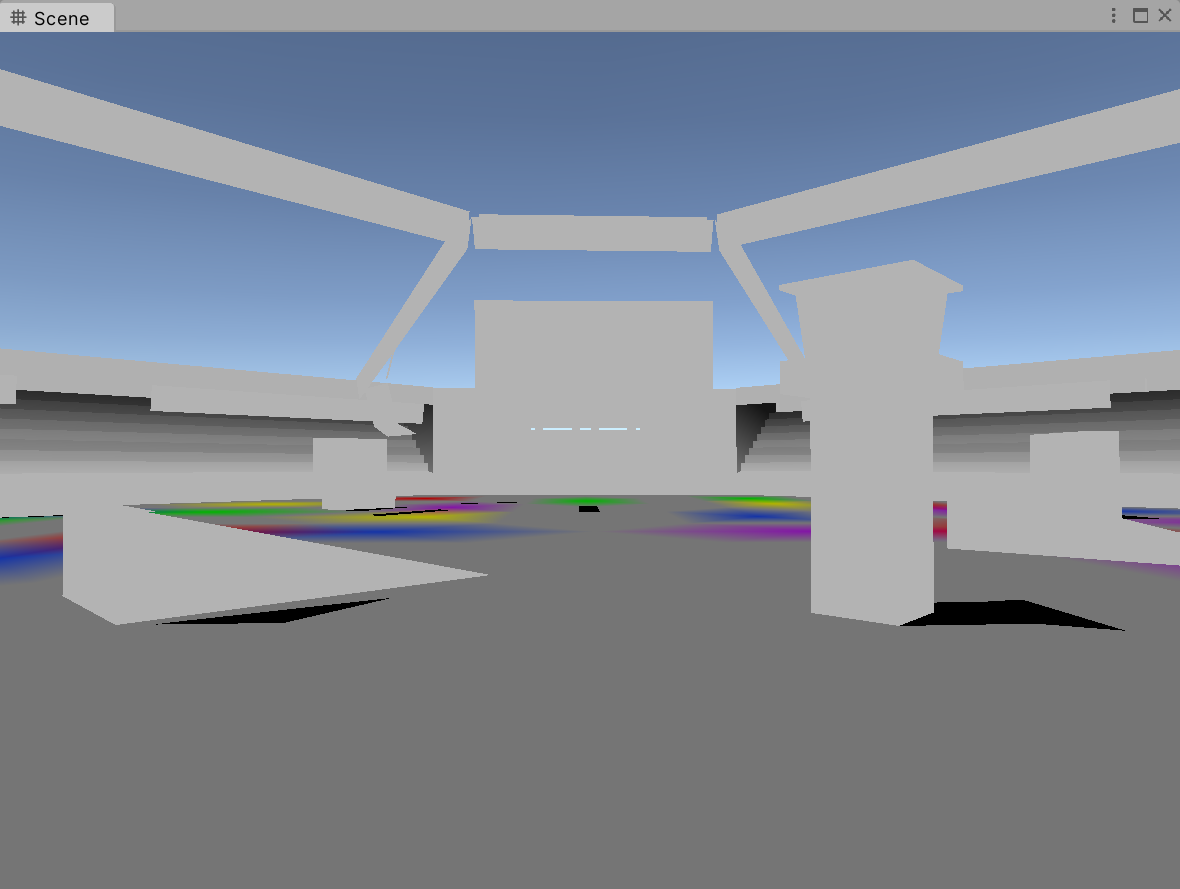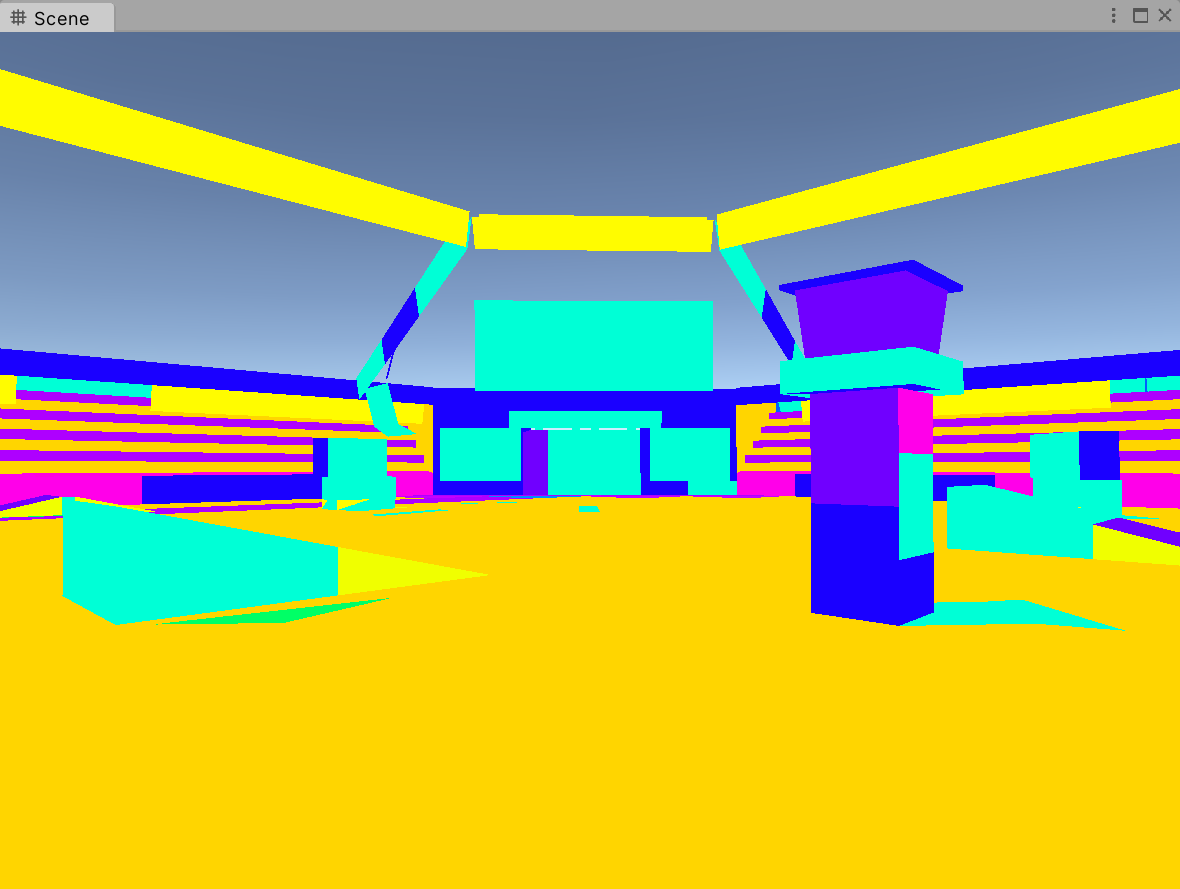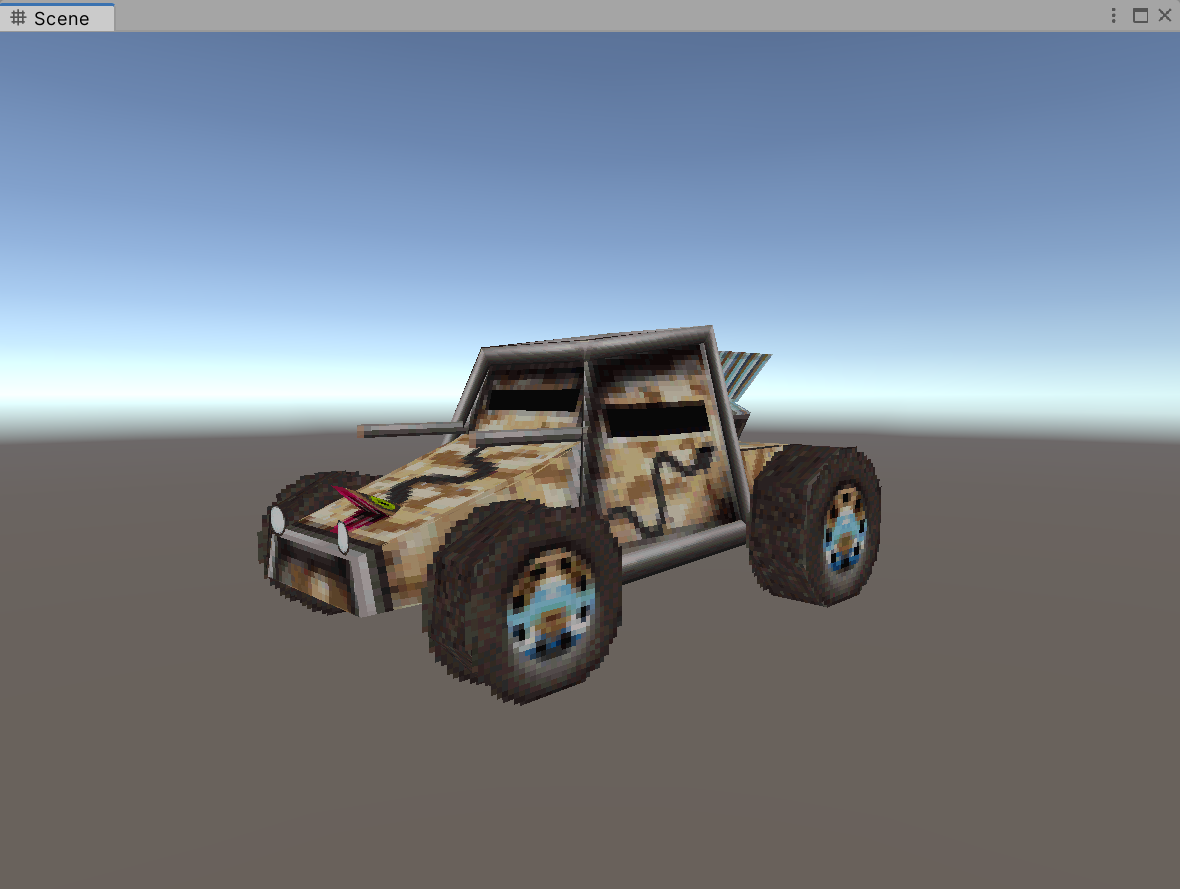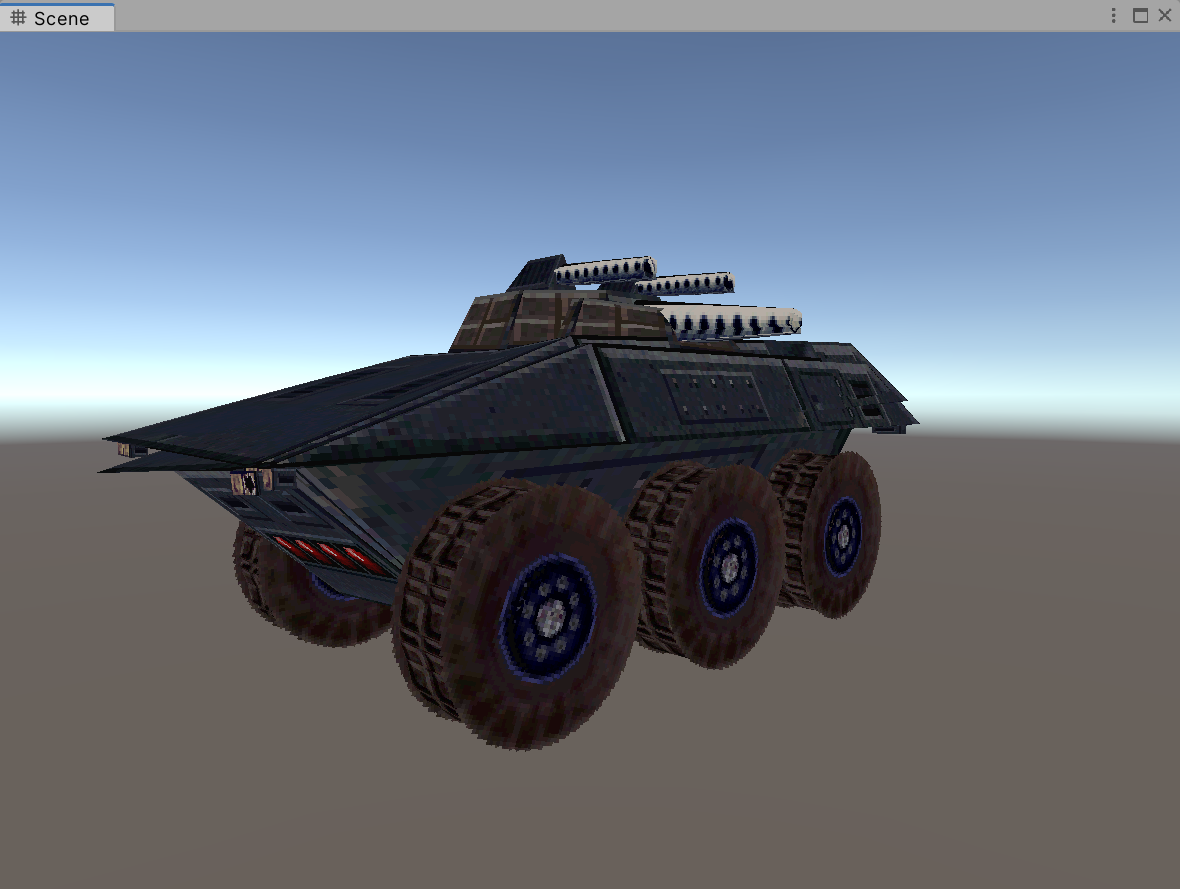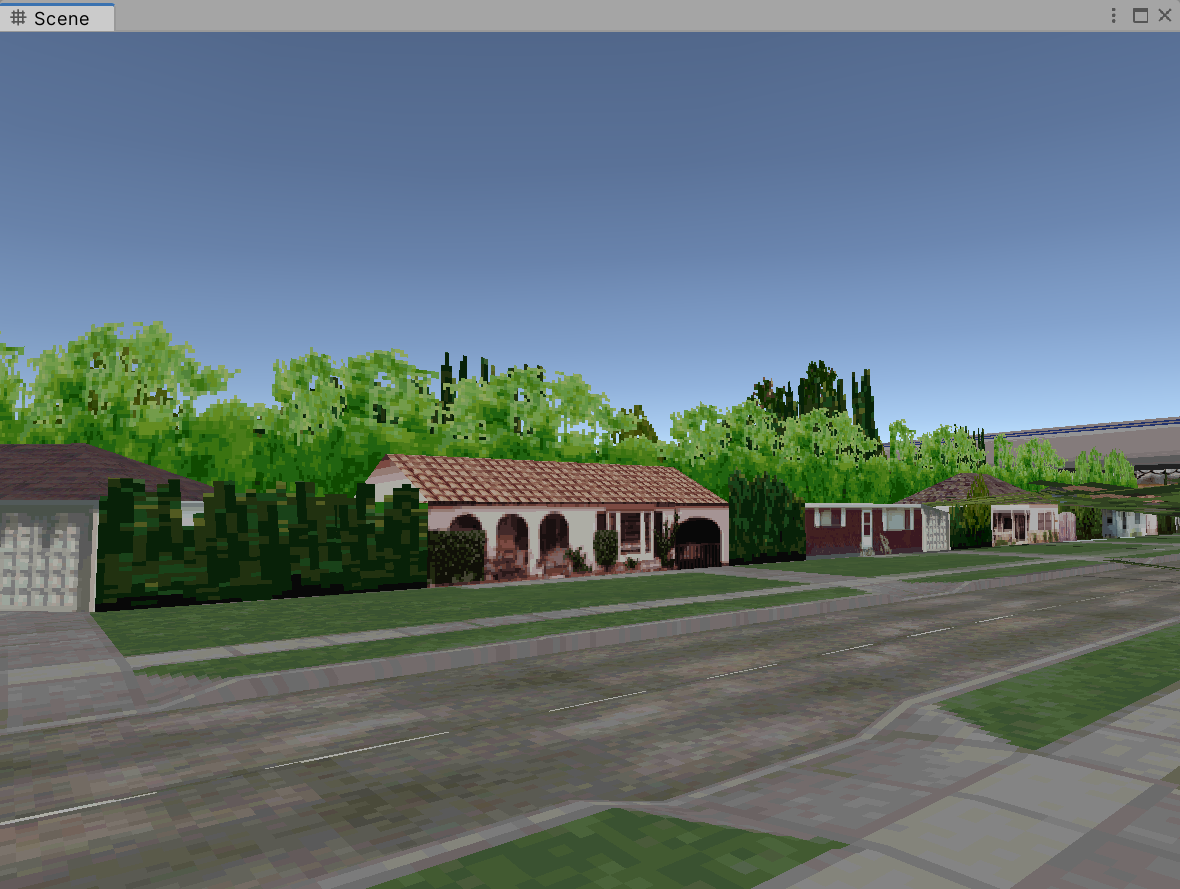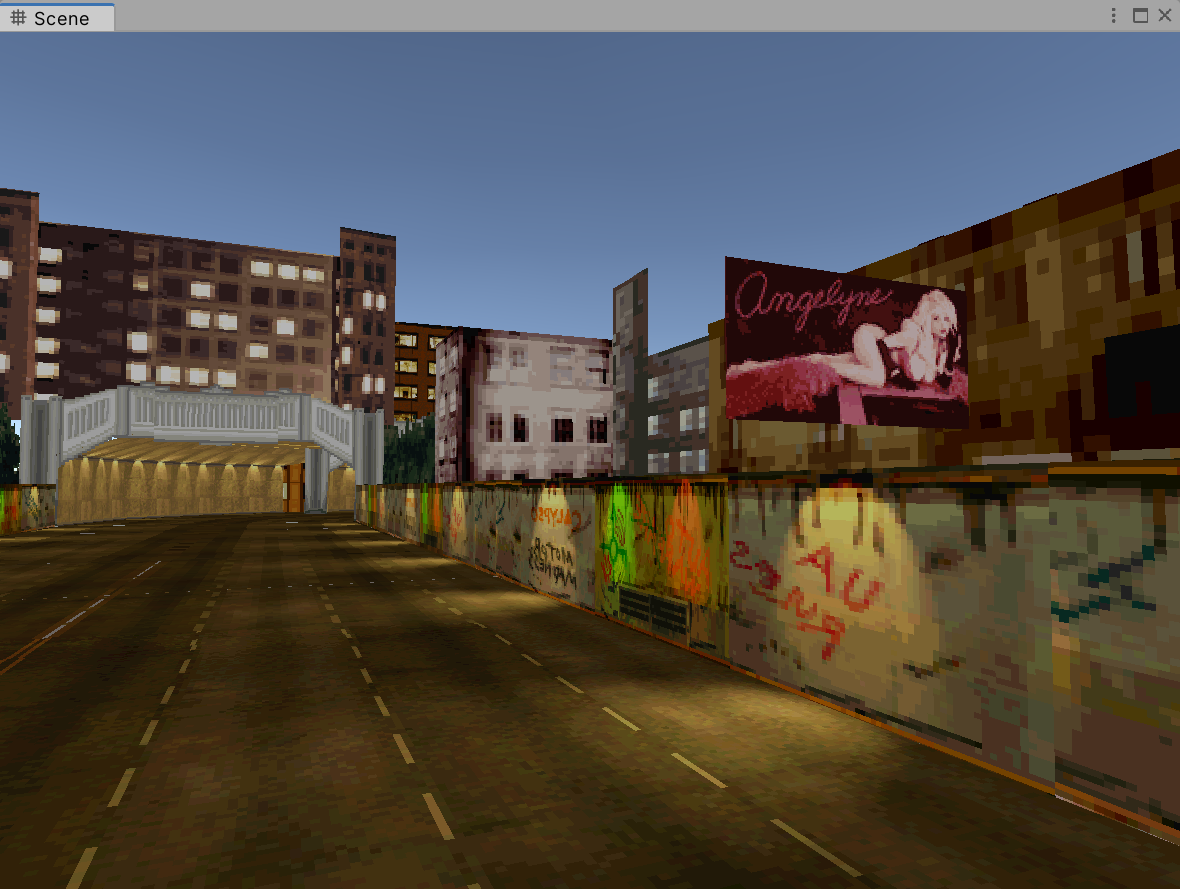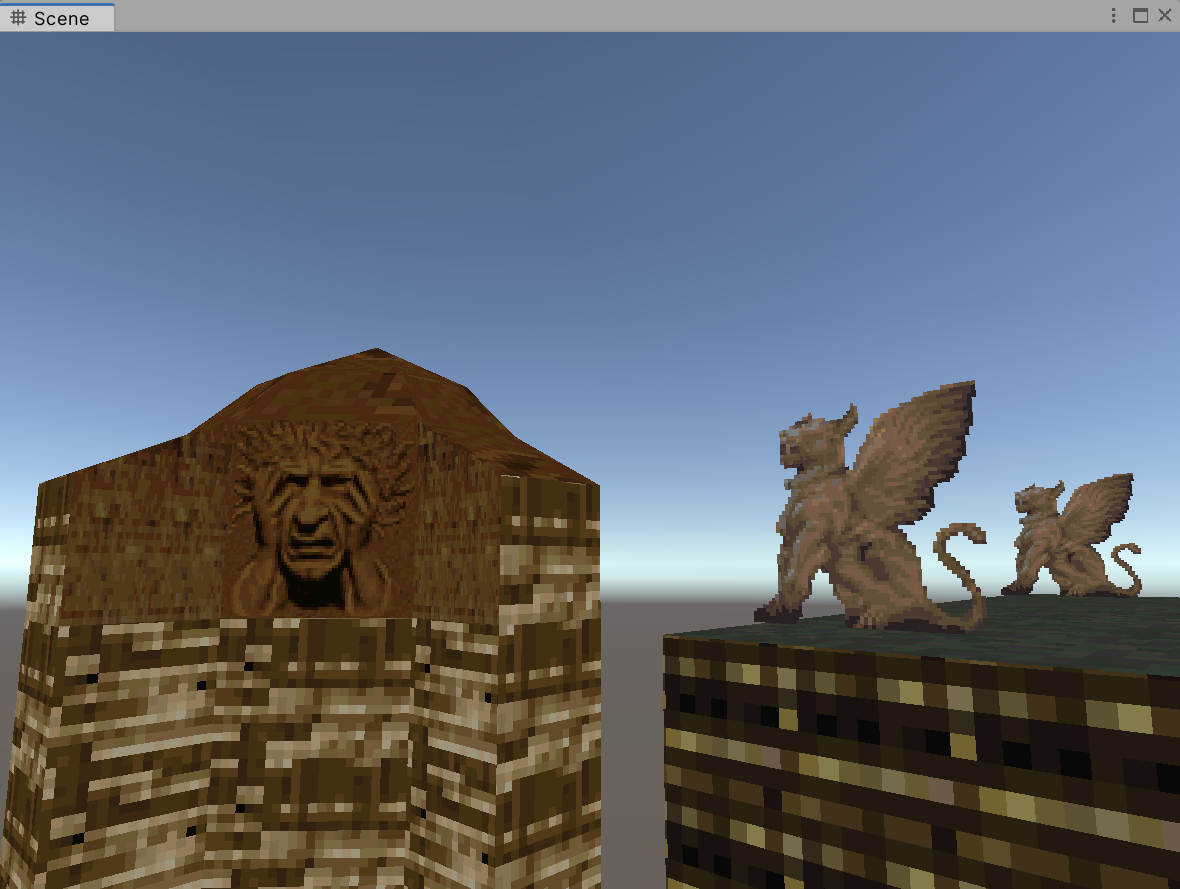Reverse-engineering of Twisted Metal, a game released on the PlayStation in 1995.
- Twisted
- Table of Contents
- Getting started
- Using the database viewer
- Reverse-engineering
- Known issues
- Gallery
To use this project, you will need the following:
-
Unity 2022.1.0b16 or later as the project uses the latest UI elements
-
Twisted Metal, you can use demo files from UK PlayStation Magazine 4 CD
The database viewer allows you to explore levels of the game, you can launch it from the Twisted menu.
Open an existing database:
Every database has an associated texture atlas, make sure that both are in the same directory.
Enable polygon-level generation:
Generates one game object per polygon, this is quite slow but allows for a detailed inspection.
Enable texture:
Objects without texture will most likely need to have vertex color enabled to look as intended.
Enable transparency:
Objects with transparency will most likely need to have this setting enabled to look as intended.
Enable vertex color:
Pretty much all objects in the game will require this setting to be enabled to look as intended.
Enable polygon color:
Tints every polygon family with a distinct color, useful to highlight usage of a specific polygon family.
Enable hierarchy filtering:
Filters out the generated hierarchy, only including objects tagged as being part of the environment.
Enable search filtering:
Filters out the nodes shown in the list while searching the database, only including distinct nodes.
Enable selection framing:
Enabling this setting will automatically frame the generated hierarchy of objects in the scene view.
Number of visible nodes:
Indicates how many nodes are currently shown in the tree or in the filtered list during a search.
Search field:
Filters out the database to show nodes containing entered text, regular expressions are supported.
The content is shown as a tree view that switches to a list view while performing a search.
Multi-column sort can be done by holding Ctrl or Shift key to add or remove a column.
Database nodes have a context menu from which you can perform some actions on them.
Name:
The name of the class that implements the node.
Kind:
The major type for the node, categorizes nodes by their purpose in the database.
Role:
The minor type for the node, categorizes nodes by their purpose in the scene.
Position:
The position of the node in the database file.
Length:
The length of the node in the database file.
Category:
This is a human-friendly representation of the Role column, indicates major role in scene.
Description:
This is a human-friendly representation of the Role column, indicates minor role in scene.
Polygons:
Indicates what family of polygons are referenced by the database node.
The DMD format is a hierarchical data structure that consists of nodes with different kind and role.
It appears to be a rough variation of the HMD format that can be found in the official PlayStation SDK.
Everything in the database is referred to by an offset to a base pointer specified at the top of the file.
The nodes themselves are intertwined with model data throughout the file and in no particular order.
These can be found in the PSX.SYM file and they do match against the executable SIPS_600.07.
Obviously, knowing this information is extremely useful in further understanding the game!
Ghidra and IDA users can generate a script to perform batch renaming using dumpsym.
From the Twisted menu, you can batch extract the nodes and polygons for an easier analysis.
You are likely to hack onto the game at some point, try no$psx with its amazing debugger.
You may also like nocash-GPU-command-prettifier and nocash-GPU-texture-calculator.
Here are a couple of useful patches to apply to the game:
| Address | Value | Result |
|---|---|---|
| 8011A270 | (DWORD)(0) | Suppresses enemy movement |
| 801196FC | (DWORD)(0) | Suppresses enemy weaponry |
| 800FF634 | (DWORD)(0) | Suppresses head-up display |
Progress bars may occasionally not reach 100%:
This is because Unity progress bar are incredibly slow at catching updates.
Focused control may occasionally lose focus after typing:
This happens throughout Unity when there are UI elements at play.
Tree view is partially redrawn after clicking a column header:
This is a bug in Unity's tree view.
Recursively expanding a tree view item using selects the item:
This is a bug in Unity's tree view.
Tree view items cannot be fully revealed using keyboard navigation:
This is a bug in Unity's tree view.
Wrong colors in some regions:
Extra lighting is involved in the game but it hasn't been figured out yet.
Wrong sprites:
These require a special type of node that isn't implemented at the moment.
Wrong textures if rendering a database in its entirety:
There is colliding texture information in the game data.
Wrong textures in some regions:
There is incorrect texture information in some of the polygons.
Wrong transforms for some objects:
The game performs extra transformations at runtime.
Wrong transparency for some objects:
Correct transparency among families of polygons isn't implemented at the moment.
Z-fighting:
Either some objects are at the same position or required ordering tables are missing.
